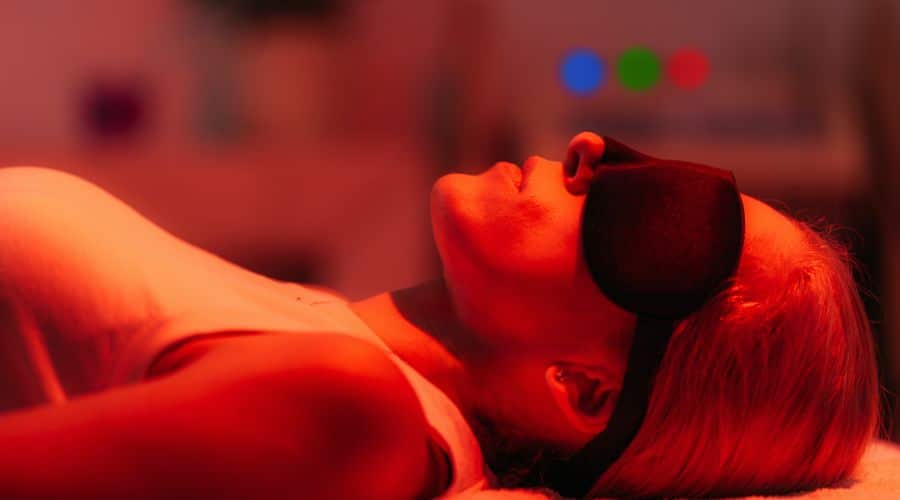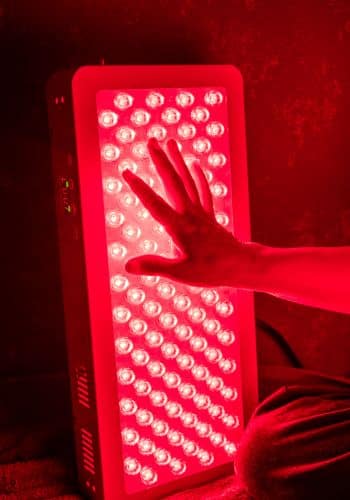Get Your Free Red Light Therapy Report!
Complete the form and get your FREE guide today!

At T4 Physio, our mission is to help you stay active, reduce pain, and avoid unnecessary medication or surgery – always by addressing root causes and using natural methods wherever possible. In that spirit, red light therapy is one tool we believe has real potential when used appropriately.
Below you’ll find how it works, who might benefit, and why T4 Physio is the place to be to receive this state-of-the-art technology.
Red light therapy (sometimes called low-level laser therapy or near-infrared therapy) involves exposing tissues to low-level wavelengths of red or near-infrared light. Unlike high-energy lasers, red light therapy is non-thermal (i.e. it doesn’t heat or burn). The light penetrates skin and is absorbed by cellular structures, especially mitochondria, helping cells to operate more effectively.
In essence, it can stimulate cellular metabolism, increase tissue repair, reduce inflammation and improve blood circulation – all without invasive intervention.
1. Absorption by Cells – When red or near-infrared light hits your tissues, mitochondria in your cells absorb photons via chromophores (light-sensitive molecules).
2. Increased ATP Production – One key effect is boosting ATP (adenosine triphosphate) production – the energy currency of cells. More ATP means cells have more energy to repair and regenerate.
3. Reduced Oxidative Stress & Inflammation – The therapy can reduce levels of reactive oxygen species (ROS) and upregulate antioxidant defences. This helps calm local inflammation.
4. Modulation of Pain & Nerve Function – It may influence the way nerves transmit signals, reducing pain perception, and support nerve regeneration in some contexts.
Bottom line: By boosting your body’s natural capacity to heal, it becomes a valuable and powerful addition to a treatment plan in many cases.
If you’re not quite ready to book an appointment yet and have some questions you would like answered first, click the link below to complete a form to get the conversation started.


Red light therapy isn’t for everyone or every condition – but in our experience, the following groups or scenarios may see a tangible benefit:
At T4 Physio, since we specialise in helping people 40+ stay mobile and independent, red light therapy often pairs well with physiotherapy, exercise, manual techniques and lifestyle optimisation.
Here’s how we integrate red light therapy into our treatment plans:
Here at T4 Physio, we believe in natural, evidence-based strategies that empower your body to heal itself. Red light therapy is an important tool – subtle but powerful, especially when paired with the right movement, guidance, and expert oversight. If you’re exploring non-invasive modalities to support pain relief, tissue repair, or recovery, red light therapy may be part of your path forward.
Are you unsure if physiotherapy is right for you? Would you prefer to talk with a Physio before making a decision? All you have to do is click the link below to fill out a simple form.
If you’re not quite ready to book an appointment yet and have some questions you would like answered first, click the link below to complete a form to get the conversation started.
Complete the form and get your FREE guide today!

Complete the form and get your FREE guide today!
